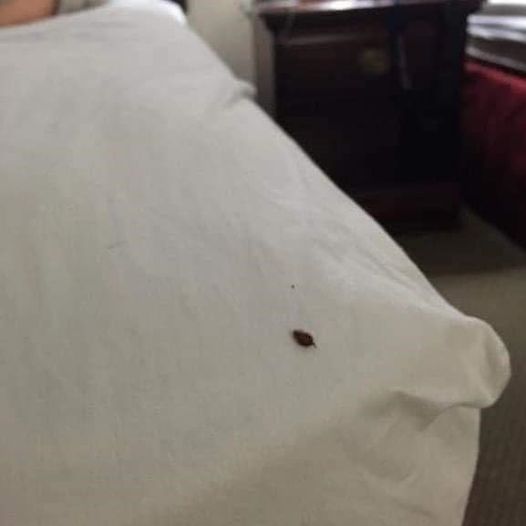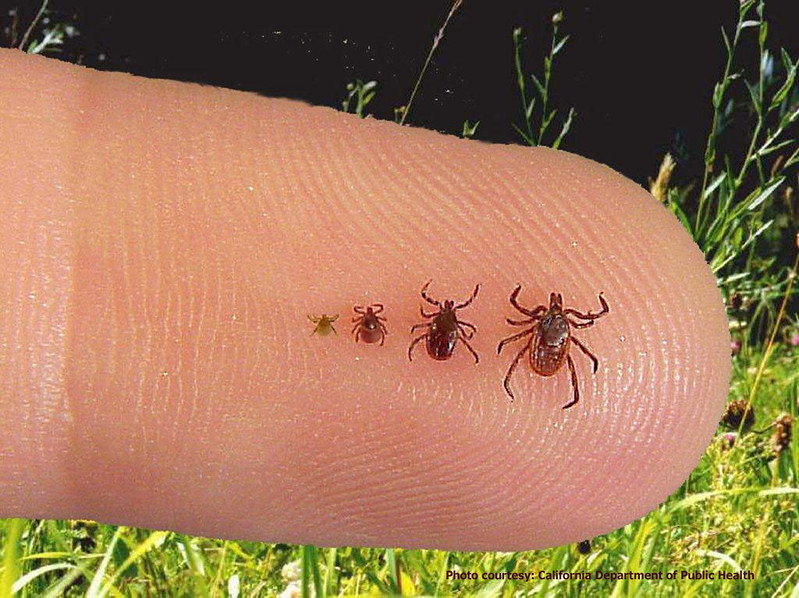
Ticks are parasitic spiders that feed on the blood of many creatures, including frogs, birds, reptiles, and mammals. Ticks like to attach themselves to humans and animals that come into contact with them, therefore trees and shrubs are suitable locations for them to hang out.
Numerous serious illnesses can be transmitted by ticks and their young. They occasionally may also result in anemia and allergies.
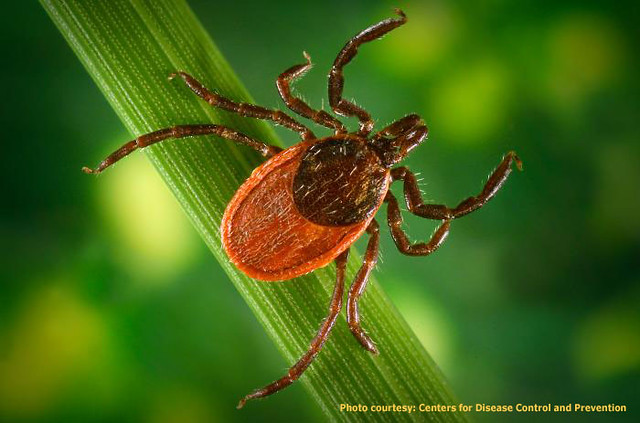
Insect pests complete their life cycle through either simple or sophisticated transformation. An insect undergoes a complicated transition in which it develops from an egg into a larva (also known as a caterpillar), a pupa, and ultimately an adult.
An insect seems to be a little replica of its adult form as it hatches. After that, it goes through several molts until reaching adulthood.
Ticks metamorphose into many species. When they hatch, they are referred to as “larvae,” even though they don’t resemble worms. They resemble tiny ticks. They have six legs and are roughly the size of a poppy seed. They attempt to attach themselves as soon as possible to any living object that can provide them with blood. When it’s full, it removes them and transforms into an eight-legged nymph. Though they are somewhat smaller than adult ticks, nymphs can still transmit illness and have a tick-like appearance.
If you discover ticks in your house, you should remove them gently and dispose of them properly. You may wish to hire a professional pest control service if they continue to return.
WARNING
Among the worst illnesses that ticks can transmit include tularemia, Rocky Mountain spotted fever, and Lyme disease. Many tick prevention methods include the use of insecticides, which when misused may harm both people and animals. If you’ve experienced tick issues inside your house on many occasions, take precautions to make it less inviting to ticks and consider contacting a reputable pest control company for ongoing assistance.
What appearance do ticks have?
Ticks are tiny, spider-like insects that are found in fields and forests. Although they are still active in the fall, they are most prevalent in the spring and summer. These are non-flying insects that feed mostly on animals, although they can attach themselves to humans.
Ticks have little bumps all over their body and are either brown or black. Their jaws are designed to sever skin, allowing them to consume blood via their tiny heads. They have slender, lengthy legs. Adults and nymphs have eight legs, but the extremely tiny caterpillars only have six. Ticks can become “engorged,” or larger, after consuming blood. They may grow to the size of a pea during this period.
Take caution and make sure you are not dealing with bed bugs or carpet beetles if you believe you have found a tick inside. See a doctor if you discover a tick on your body or that of your pet to learn the best course of action and available treatments.
Although certain tick species may enter buildings, most people consider ticks to be external parasites. Not all of them spread illness, but some do. These ticks include:
The most well-known tick vector for Lyme disease is the deer tick. It is tiny and difficult to see. However, as this tick is not typically seen on deer, the term “deer tick” is a little outdated. It’s rats and mice all the way.
The Rocky Mountain spotted fever and Lyme disease can be carried indoors by the American dog tick on clothing or pets.
The brown dog tick is a typical nuisance in homes that likes to stay there for a long period. Although it is not known to spread illness, it can cause anemia in pets if allowed to grow inside.
Tip
Ticks typically carry indoor ticks onto their clothing and pets. Check your dog and yourself when they come inside after being outside if they have been running through long grass or the woods, or if you live in an area where ticks are a major issue.
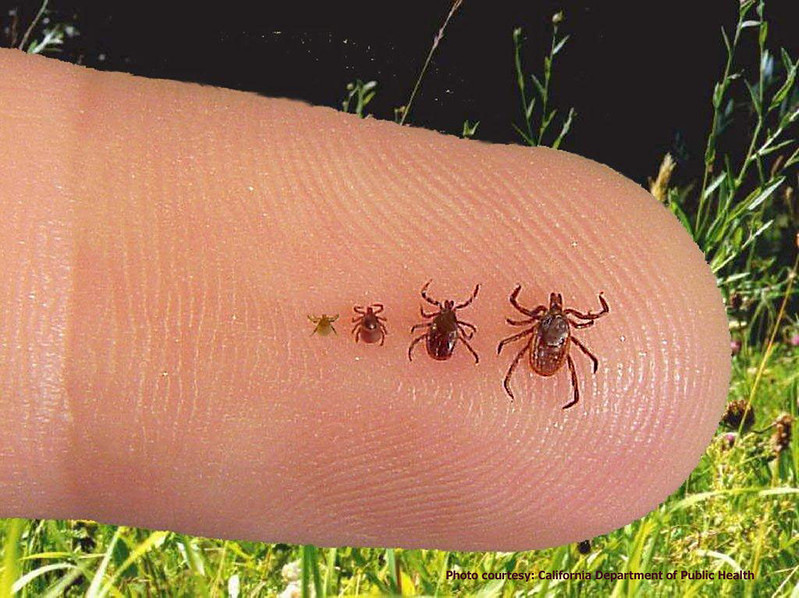
Six Natural Ways to Get Rid of Ticks
Tick management isn’t truly about getting rid of ticks. As long as you live in a region where ticks are widespread, you will always encounter them. It’s critical to keep them away from your family, pets, and house.
Several folktales claim specific items may repel ticks or prevent them from biting. But not every one of these concepts has a scientific basis. Certain methods, such as lighting the tick with a hot match, may do more harm than good to the insect.
Use simple, common-sense approaches to get rid of pests. If a treatment plan looks too good to be true or sounds too complicated or risky, it generally is.
Understand How to Check for Ticks
Ticks must remain embedded for 36 to 48 hours before they may do any harm, according to the CDC. Check everyone carefully for ticks when you or your dogs come inside after being outside, especially in the spring and summer. Examine these bodily parts:
- In the hair and surrounding the ears
- between the limbs
- knees back
- beneath the pits of the arm
- encompassing the waist
- Within the bellybutton
Remember to check your stuff as well. Check items like jackets, bags, and tents as well, as ticks have been known to get inside them.
Advice
During the first 24 hours following feeding, ticks with Lyme disease do not transmit the illness to other individuals. Additionally, showering two hours after entering a building can reduce your chance of contracting Lyme disease and other illnesses carried by ticks. Additionally, it can eliminate ticks that haven’t had a chance to attach themselves. Don’t forget to check your entire body for ticks after being outside by taking a shower!
Examine your animals for ticks.
Ticks frequently enter buildings with animals. Ticks, such as the brown dog tick, are content to be in your house since it allows them to multiply and feed on your dogs. These items may cause anemia in your dogs.
Ticks on your pet may be difficult to spot because they are so tiny. They tunnel into an animal’s hair and attach themselves so they may feed covertly. By the time you see the tick, it is most likely fully bloodied. Don’t wait till you spot a blood-filled tick! Make sure your pets are clean when they come inside and give them medication to prevent ticks and fleas.
Remove ticks.
To get rid of ticks, a variety of sprays and repellents are available, including homemade and over-the-counter products like DEET.
The following essential oils have been demonstrated to help repel ticks:
Lemon juice
Oil of eucalyptus
To manufacture your homemade repellant, combine one or more oils of some kind with witch hazel, vinegar, and water. But first, finish your homework! Even with proper usage, essential oils can still be harmful, so choose a reliable approach and pay close attention to it.
Put on Appropriate Clothes
Whenever you go outside in forested areas where ticks may be prevalent, don’t forget to dress appropriately. You may also wish to apply an insect repellent to your clothing before venturing outside to avoid ticks and other insects.
Cover your skin, put on long sleeves and sturdy pants, closed-toe shoes, tall socks, and so forth. Also, make every effort to avoid passing through densely forested regions.
When you’re outside, dress comfortably. Ticks are considerably simpler to spot on the outside of your clothing since they are dark creatures.
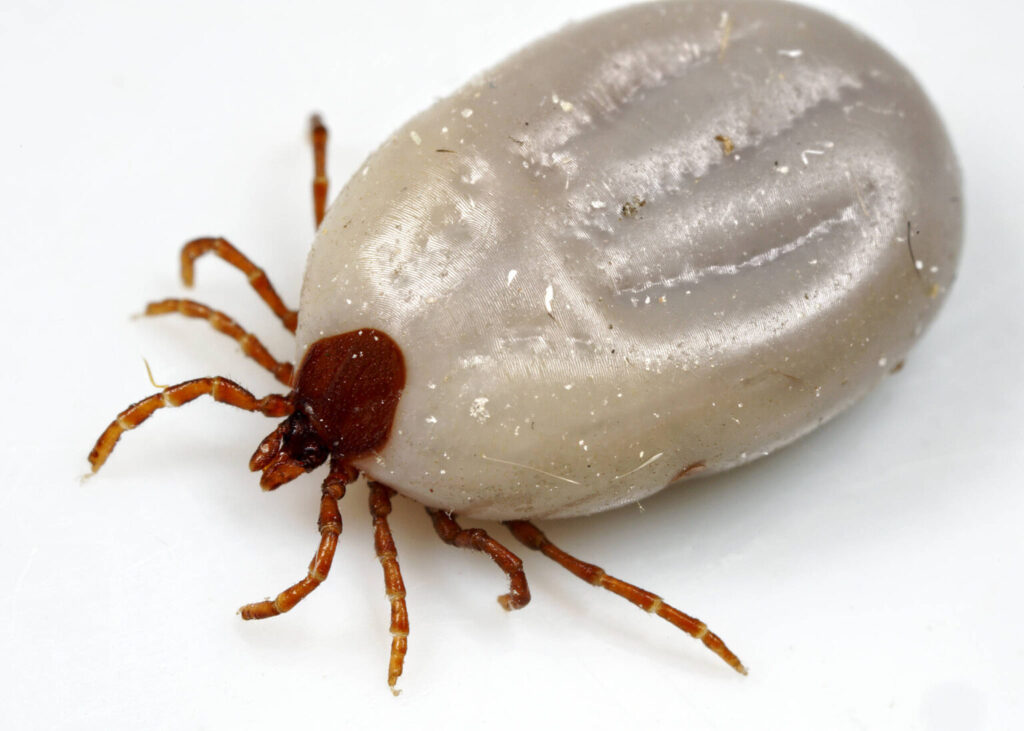
Use a Dryer to Get Rid of Ticks
Before washing everything, place it everything in the dryer on high when you return inside after being outside. Yes, you read correctly: dry, wash, and dry again. The heat of the cleaner may not kill the ticks, so even if it would make sense to wash the garments first, you don’t want to leave them there.
Make sure your clothing is dry. Ticks are prone to drying out. Remove any ticks that are still on to your clothing and dry them on high heat for ten minutes or more.
Take Care of the Optimal Situation
A “conducive condition” in the context of pest control is any element of the environment that exacerbates a pest issue. Food supplies, secure hiding spots, and other things are among these components.
The following considerations should be made when treating tick infestations indoors:
Ticks consume blood as food. Check your family members and pets for ticks and remove any potential food sources after they have spent time outside.
Tick hiding places: Although ticks are mostly found outside, you may keep them away from your house by trimming any vegetation or brush that is near houses or other structures.
How to Determine Whether There Are Ticks in Your Home:
Ticks are so small that it might be difficult to discover them indoors until they have consumed blood or started to create problems regularly.
Ticks prefer to hide in the long grass, scrub, and woodlands. They will form groups or stay around on their own until they are picked up by an animal inadvertently.
No matter how much you wish for them to, they will not permanently vanish. You may wish to employ chemical sprays, but using too much of these may harm the environment and your health in addition to not providing permanent tick removal.
If you live in an area where ticks are known to be outside or have historically been an issue indoors, you must know how to check for ticks and that you do so frequently.
Why Do Ticks Happen?
Ticks are a type of parasitic arachnid that feeds on the blood of birds, snakes, and mammals. They share a relationship with mites and spiders. Their numbers have been rising over the last few years, which is alarming and implies that people should be prepared to take precautions to avoid them.
Ticks are present everywhere. They are most active in the spring and summer, but they are still present in some locations as late as October. They like to stay outside, although they can enter through several doors. Here are a few of them:
Taking a trip with animals
wearing clothes that have been worn outside and hiding
How to Avoid Getting Ticks
To prevent ticks from entering your house, you must take the following crucial actions:
- Give your dogs a high-quality tick medication.
- When outdoors, use tick repellent. Know the potential hiding places for ticks and avoid them.
- Check your family and pets thoroughly before entering, especially if you’re in the woods or close to dense undergrowth.
- Wash your garments properly and dry them on a high-heat heater if you want to keep ticks off them.
- Ensure that the yard adjacent to your home is weed-free and kept in good condition.
Although these actions may appear labor-intensive, they will protect you, your loved ones, and your pets from the health hazards associated with tick ownership.
FAQ
What is the lifespan of a tick?
Certain ticks have a three-year lifespan before they pass away. Depending on the kind, ticks at this period may pose a health risk to you.
What is meant by Lyme disease?
Ticks transmit a bacterium that causes Lyme disease. This illness feels like the flu and causes rashes. It can also affect the heart, brain system, and joints.
Lyme disease is carried by which ticks?
Ixodes ticks, commonly referred to as deer ticks and black-legged ticks, are the carriers of toxoplasmosis. These ticks are seen in some regions of North America.5.
Why are there more ticks in the world?
Globally, tick populations are increasing due to factors such as increasing temperatures, habitat degradation, and international animal commerce.
